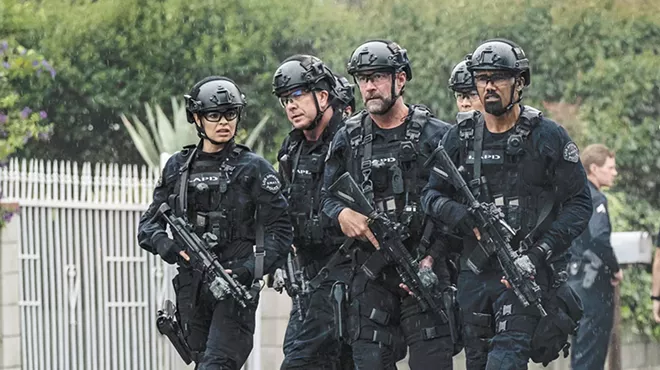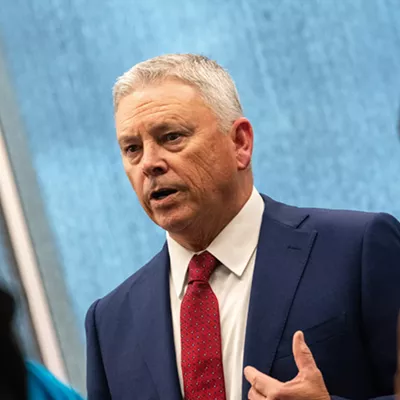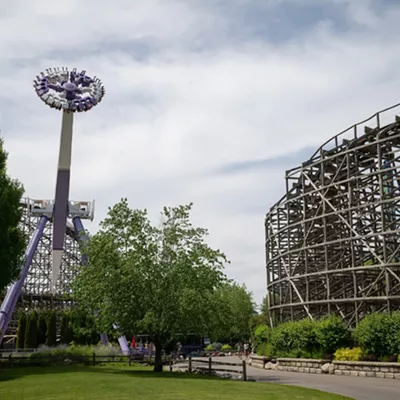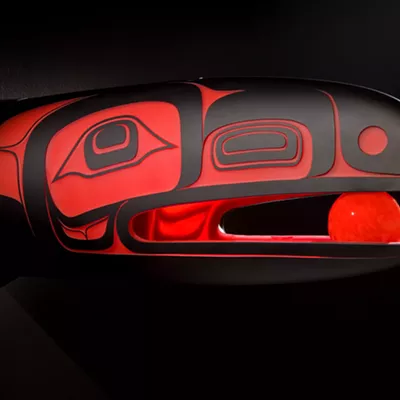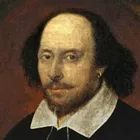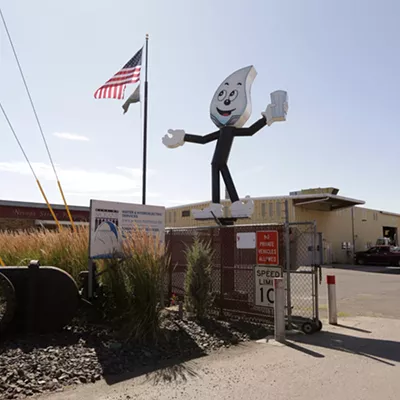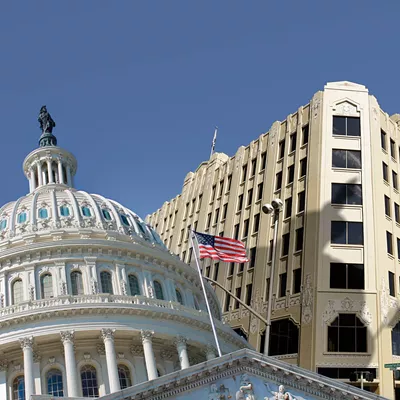click to enlarge

Photo courtesy of Aaron Rahsaan Thomas
S.W.A.T. showrunner Aaron Rahsaan Thomas.
As Black Lives Matter and anti-police-brutality protests erupted in the streets in the last month, police TV shows ranging from
Live PD to
Law & Order to
Paw Patrol have been accused of being "copaganda" that, intentionally or unintentionally, glorify the police profession while largely ignoring the populations it victimizes.
But while many TV writers of cop shows have holed up in their metaphorical bunkers,
S.W.A.T.'s
Aaron Rahsaan Thomas — a rare black TV writer running a police show — hasn't been afraid to dig into the issues with a wide variety of publications.
In the last few weeks, Thomas has been giving interviews to everyone from scrappy upstarts like the Huffington Post to mainstream journalistic behemoths like the Inlander.
It's particularly interesting because
S.W.A.T. isn't intended as a goatee-stroking deconstruction of the police profession. Instead, it's an "
aspirational show for as wide of an audience as possible." It has more in common with The Fast and the Furious franchise — the pilot was even directed by Fast 5 director Justin Lin — than something like The Wire. There's plenty of insane stunts, high-octane action and talk about the interracial squad of co-workers as a "family."
Within this constraint, Thomas and his co-writers have attempted to address issues like police corruption, criminal justice reform, and especially interracial tension between the law enforcement and the community they serve. But have they succeeded? Last week, we published a piece on this question, but here's a longer excerpt from our interview with Thomas.
The interview has been edited for space and clarity.
INLANDER: I was just watching the season one finale of S.W.A.T., which you wrote. It has a flashback where the dad of black SW.A.T. team leader Daniel "Hondo" Harrelson tells his son, after he's harassed by the cops, that it's "black versus blue." And when his son protests, he asks him, "What are you gonna do about it?" I would pose that question for a lot of the TV writers running shows about the cops: Considering there's black versus blue tension right now, what should TV shows do about it?
THOMAS: A
s artists and as writers, our top priority tends to be to entertain an audience. But at the same time, especially when we have certain flashpoints in our culture, these are reminders that it's not just purely entertainment that we're putting out. We're putting out images that actually tend to influence narratives and real-life interactions.
What can we do, what should we do, when certain sicknesses are not only diagnosed, but the symptoms flare up? What we should do is to recognize our part in the conversation. I think silence can be not only irresponsible but dangerous, even if it's born of awkwardness or ignorance.
On our show, S.W.A.T., our goal is always to try to add as many interesting questions to the conversations as possible. It's not about providing propaganda one way or another. It's really to be about posing questions that haven't been asked. And then allow viewers themselves to be able to process and have conversations themselves.
You don't look at it being necessarily an activist or moral preacher, so much as really getting at the nuances and tensions that are inherent to the profession?
We're on a major network. In essence, we're serving buffet food. We need to appeal to as many eyeballs as possible, as many types of advertising tastes as possible. In essence, it's leading our viewers to water. Once they discover the water, I'm an optimist. My belief is that people will continue to build on that.
How do you feel about the TV portrayal of police officers has impacted the public narrative of police officers?
The trope of the hero cop has been very popular. Not only popular, it's pretty much dominated the genre. It's either a hero cop, or it's an anti-hero cop.
An abundance of the same images, the same types of messages, the same points of view over and over again throughout decades — it's very easy to look at that how that supports the status quo and how it doesn't necessarily challenge the status quo.
One challenge with writing a more procedural case-of-the-week show instead of a purely serialized drama is that you're resetting every week. In that format, how do you challenge the status quo?
Sometimes, the progress may be slow. We have a main character at the center of our show, an African American who was raised in South Los Angeles, but works as, of all things, a militarized police officer. That in itself makes its own statement because I don't think there's been a character like that on a major network police show ever. And then the question is always how do we build on that?
That character has a father who used to associate with the Black Panthers, who has a different view of police than he does. Two black men can debate the pros and cons of being a police officer. It's not one-sided.
Even in the midst of Hondo and the team saving the world, we're always looking to question how we're saving the world.
Do you have a sense for how these sorts of shows actually impact police officers themselves?
I've worked on enough police shows and have gone on enough ridealongs and have known enough police officers to know that sometimes there's the answer that you're given and the answer that is right.
You watch a TV show that's based on your livelihood and the first thing you can pick out are the million things that are not true to life. At the same time, some of those same officers have the S.W.A.T. theme song as their ringtone.
There are officers I know for a fact that join S.W.A.T., in large part because they grew up with the show or the Samuel Jackson movie. And that those images were inspirations for them. So with our show certainly that's what a big part of it is — for the officers of tomorrow, what type of examples are we giving them?
Radley Balko's book The Rise of the Warrior Cop mentions the previous iteration of the S.W.A.T. TV show in the 1970s as a key cultural factor in the rise of these heavily armored S.W.A.T. teams, with these powerful weapons. Beyond the racial conversation, there's another debate about the existence of militarized police officers. Your show's first season finale ends with the S.W.A.T. team's MRAP being driven through a white supremacists semi-truck, as this rockin' badass moment. How do you grapple with that aspect of the show?
That's a great question.
We've chosen the realm of S.W.A.T. to tell the stories through that tend to require big action and suspense. But at the same time, we're constantly asking ourselves: Are we being as responsible as we can be when it comes to gun violence? When it comes to whether or not we're glorifying certain types of violence? We're constantly asking ourselves, walking that line of: How far do we want to go? When possible can we go nonlethal? Is this the best way to take someone down? Does it have to escalate? We're constantly talking about ways to de-escalate.
At the end of the day, if you ask your average S.W.A.T. officer, what they'll tell us is it is meant to be a life-saving unit. But there's also the
G.I. Joe side of S.W.A.T. as well. We're looking more and more
to try to lean into: What are the realities of that imagery?
You have this tension where the TV imperative is to escalate, where the ideal imperative for police is to de-escalate.
I look at the episodes we're looking to do moving forward.
There are certain stories to be had that we haven't necessarily gotten into when it comes to the perception of militarized police; when it comes to the types of officers who are attracted to this line of policing specifically.
Certainly, there are things right now that we're talking about getting deeper into as far as the mindset and the culture of the police and the LAPD in particular.
There's a monologue that the Hondo gives in the pilot episode about how the cops ended up breaking his arm when he was younger. And then I noticed there's a season three episode where Hondo threatens to break a suspect's "other arm" if he lies to him. How do you deal with the controversy around the "24 problem" — the use of threats or torture to get information?
I think moving forward there's gonna be higher attention to detail and a higher sensitivity to it. That doesn't mean the characters won't still be flawed. That doesn't mean that those issues won't be explored. It may not be so much the complete elimination of elements like that — literally "strong-arming" — but it's more so handling it responsibly. "What are we saying about that?"
In that context, it was a moment you cheer for, right? Because this is a really bad guy. It's a cool badass moment as opposed to something that might be seen as problematic.
Even with that, you want to be careful. We've presented Hondo as a guy that, at times, has had to work out the way he's trying to save the world. In season two, we had a bit of a run where we revealed that he had some anger issues that he was dealing with.
We try to take any kind of situation where he's tempted to go further than he normally would from the character standpoint of, "What does that say about how he's working out his own issues?" I
n that case, he was dealing with a case that was close to a friend. Are there places you still need to grow? In Hondo's case there definitely are. We don't want things like that unsaid as though that was what saved the day, and that was what was necessary.
We try not to make a habit of using physical violence as the ultimate negotiation card.
The characters in S.W.A.T., some of them have "Thin Blue Line" flags on their helmets. That's become a kind of symbol, that at least for some people in certain communities, has been considered very controversial. I'm wondering if that's something that the show has explored or will explore?
The spirit of the imagery — we do plan to explore. Not necessarily that specific imagery. I mean, the Blue Line — I think the "
Punisher Skull" is also one that can be polarizing. And all that comes under the umbrella of the culture of the police force: What is it to be part of a "fraternity" and to be true to that fraternity? But also: What values are you taking away from that fraternity yourself? Which ones do you take away and which ones do you question?
We're definitely talking about getting into the spirit of a lot of that in season four.
Are there any regrets or things you wish you would have done differently when writing about police for television?
I would say no.
I come in with a unique perspective being an African American male. I've always looked at, especially the police procedural with, I think, a critical eye. Knowing that there's a "love-hate." In the same way that I grew up in a community with a love-hate relationship. There's both. There's not just one. And with that balance, that's the way I'm always looking at the conversation. What you're not seeing is that there's a perfect cop, which you want to acknowledge. What are the ways to improve? Get better?
You said it was "love-hate" with police procedurals. What was the "hate" part for you?
The "hate" part has always been the consistently narrow point of view.
Growing up and watching square-jawed, white guys inflict law in an urban setting, a lot of times the people that they would be busting or grabbing or apprehending — it wasn't unusual for them to look like me or my uncle or my cousin.
Even when people like me weren't necessarily criminals, they weren't always given any layers to play, or dimensions. What that message sends I probably couldn't even vocalize growing up: The idea that your point of view, ultimately, your life, the way you live, doesn't matter nearly as much. At best, it's window dressing or a garnish. You're being told you don't belong. In some cases, there's a desire to not ever have you belong. Certainly, some resentment and animosity can start to spring up.


